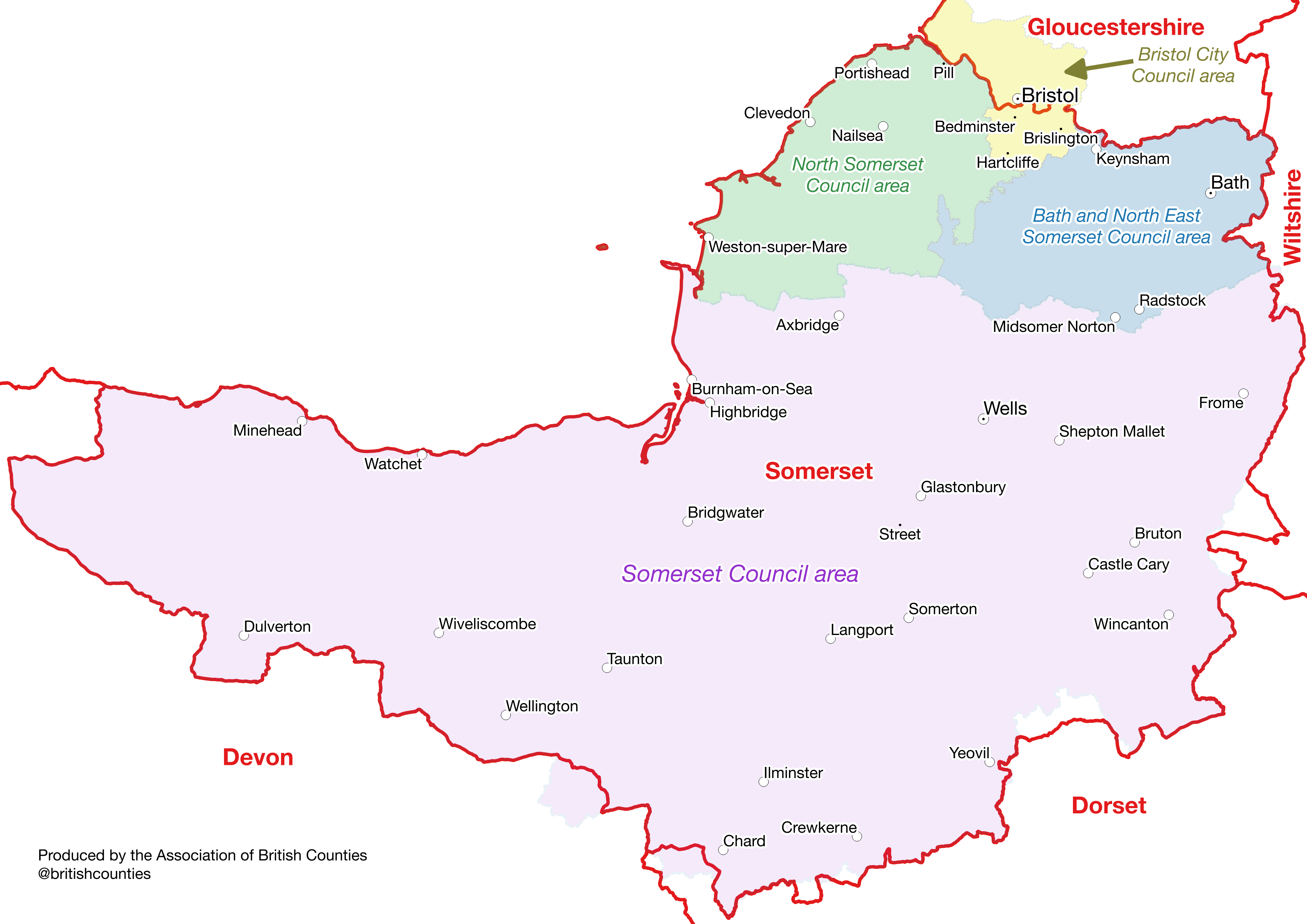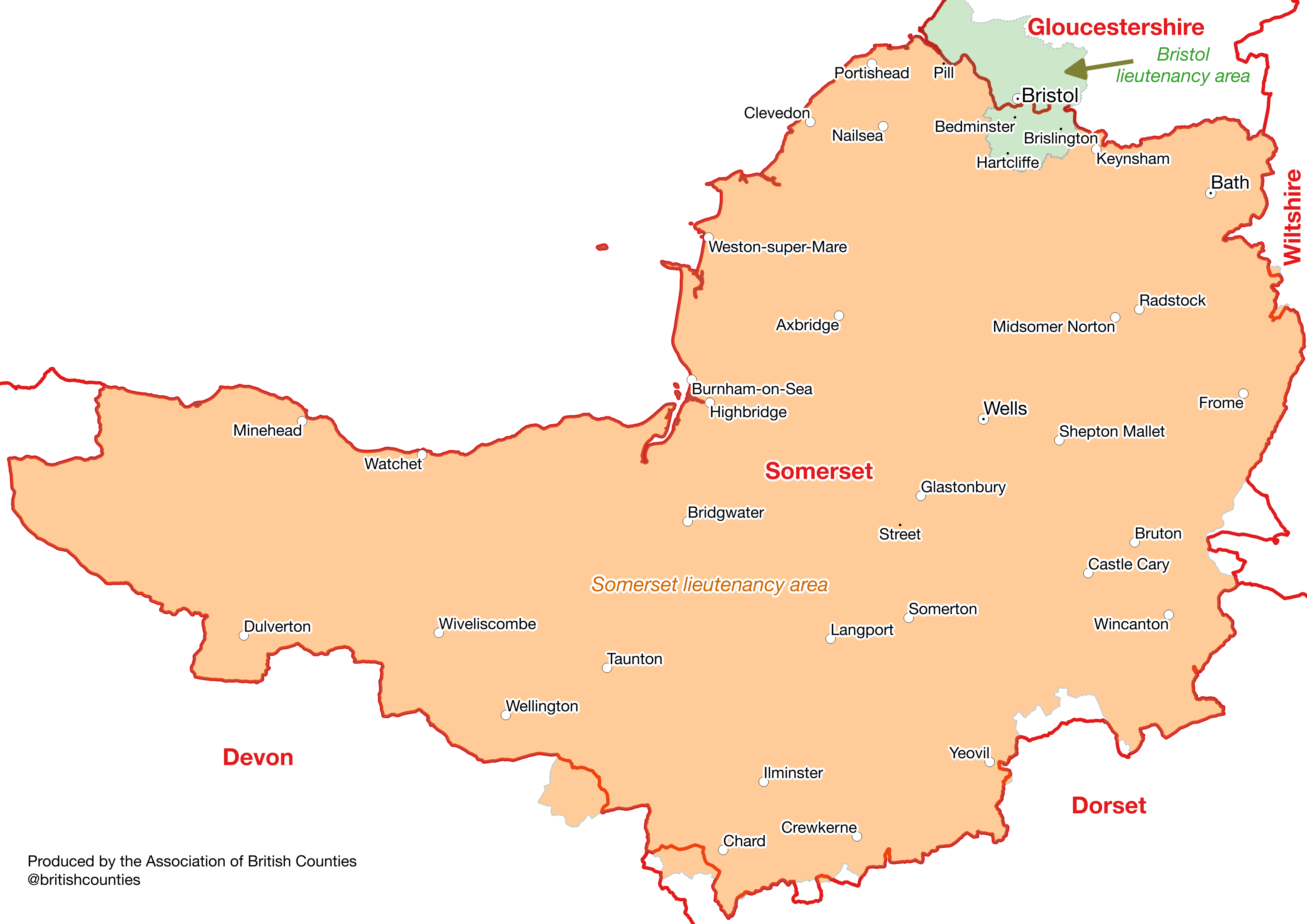Among the many outrages of the Local Government Act 1972 was the naming of “Somerset County Council”. Whilst this local authority does cover a large part of the historic county of Somerset, it does not cover the highly populated north of the county. Nonetheless, for nearly 50 years this council has shamelessly called itself “Somerset” and masqueraded as a “county” when it is neither.
The creation of unitary local government in this area was a perfect opportunity to right this appalling wrong. Sadly, the Government has not taken that opportunity. Under the Somerset (Structural Change) Order 2022 there will be single unitary authority covering the area of the current “Somerset County Council”. The Government is proposing that this new authority be called “Somerset Council“.
The map below shows the area of the new Somerset Council in relation to the historic county of Somerset and to the existing local government in the area.

Although the new Somerset Council area does cover 81% of the area of the historic county of Somerset, only 53% of the population of the historic county lies in the new council area. The new council area does not cover the highly populated north of the historic county. Much of this remaining area is covered by the existing unitary authorities of North Somerset Council and Bath & North East Somerset Council. A small, though highly populated, area of Somerset lies in the south of the Bristol City Council area.
Even viewed just in terms of local government, it is very hard to see what kind of thought process could lead to the new set-up. Local government throughout most of Somerset will be provided by three unitary authorities: one called North Somerset Council; one called Bath & North East Somerset Council; and then a third just called Somerset Council!
Fortunately, all is not yet lost. All local authorities have the right to choose whatever name they wish. There will be elections to what will essentially be the new unitary authority (technically a continuation of the current county council) in April 2022 and then a transitional period until April 2023, at which point all the current district councils will be wound up and the unitary authority will take full responsibility. The unitary council will have the chance to decide its own name ready for when it takes full control in April 2023.
ABC has no fixed views on what the name of the new council should be, so long as it does not pretend to be a county and does not pretend to cover the whole of Somerset. Since the council does cover a very large part of Somerset then the use of “Somerset” within the name is entirely appropriate. A name such as “South & West Somerset Council” would be fairly geographically accurate and would also make sense in relation to the authorities in the north of the county. No doubt creative minds can think of alternatives. The new authority could hold a competition or, at the very least, a public consultation on its name during the transitional period.
The absurdity of naming the new authority Somerset Council is further compounded by the fact that the “Somerset” lieutenancy area covers not just the area of the new unitary authority but the areas of North Somerset Council and Bath & North East Somerset Council too (see map below).

The “Somerset” lieutenancy area is actually one of those more closely aligned with the historic county whose name it bears. It does, however, not include the southern parts of Bristol in which 14% of the population of the historic county live. The good people of Bedminster, Brislington, Knowle, Hartcliffe and Whitchurch are blessed by being Somerset folk too.
All of which leaves us with three areas called “Somerset”: the real Somerset; a “Somerset Council” area which is a travesty of the real county; and a “Somerset” lieutenancy area which is rather less than ideally so-named.
Fortunately, the solutions to this particular example of geographical chaos are easy enough. The new council can change its name to something more appropriate. It should not seek to portray itself as a county. If there is to be a lieutenancy area called “Somerset” than this should be based directly on the historic county and not, as it currently is, on the local government areas.
To properly align lieutenancies with the historic counties, the lieutenancy areas of the Lieutenancies Act 1997 should be defined in terms of the Historic Counties Standard widely recognised (e.g. by the Office for National Statistics) as the standard definition for the names and areas of the historic counties. Such a move could be viewed as the appointment of a dignitary to each historic county in recognition of their importance to our history, heritage and culture. The office of lord-lieutenant has never defined the counties, most of which pre-date its creation by many centuries, and should not be seen as such.
Whilst we might hope that common sense will prevail, it rarely does when it comes to council or lieutenancy naming. Only pressure from local people is going to get the new unitary authority to adopt a more sensible name. Only the Government can sort out the farcical mess that lieutenancies are in throughout the UK. Don’t hold your breath on that one!


One thought on “A tale of three Somersets”
Dear sirs
The story concerning the historic Somerset County Boundary.
Away to highlight the campaign would be,work with The Diocese of Bath and Wells
Since the Diocese boundary is the historic Somerset County Boundary